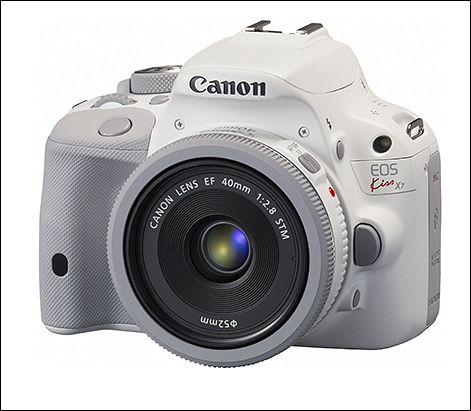
-
Small DSLR will be called EOS-b, accompanied by an 18-55m lens kit and will have $800 price tag.
Camera specs are identical to the T4i and EOS M. Digic 5 image processor, nine-point autofocus system, 3-inch 1.04K dot TFT-LCD touchscreen, four frames-per-second burst shooting, an ISO range from 100 to 12,800 and outdated HD video capture
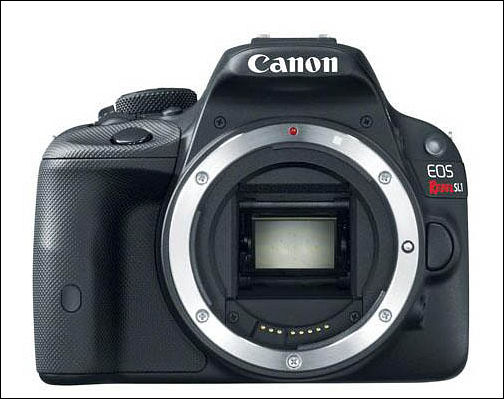
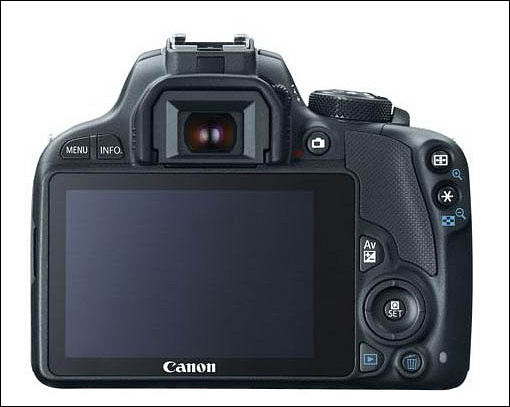
Preliminary specifications:
- 18 million pixel sensor DIGIC5
- 1.04 million dot 3-inch LCD monitor
- 4 seconds of continuous shooting frames
- Full HD video
- Shutter speed - 30-1/4000
- Flash synchro - 1/200
- ISO range - 100-25600
- AF sensor 9-point, only central is cross
- Use SD / SDHC / SDXC
- Battery - LP-E12
- Weight (body only) - 370g, 407g with battery, memory card.
- EF -S 18-55mm IS STM kit
- $650 for body
Available at:
-
EOS SL1 Black Friday Bundle, $499
https://shop.usa.canon.com/shop/en/catalog/canon-eos-sl1-black-friday-bundle
-
Refurbished kit deal for $350
https://shop.usa.canon.com/shop/en/catalog/eos-sl1-18-55-is-stm-lens-kit-refurbished
-
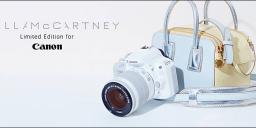
 tascam4.jpg800 x 331 - 34K
tascam4.jpg800 x 331 - 34K -
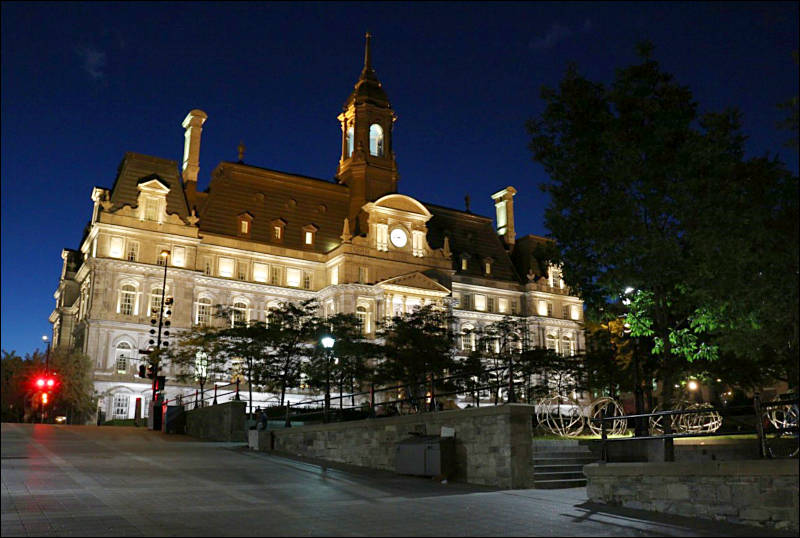
The new SL1 follows the tradition by reworking the inside of its predecessors to provide much improved image quality and a new ultra-fast autofocus system ideal for action photography.

 v142.jpg800 x 538 - 78K
v142.jpg800 x 538 - 78K -
Neutral review of 100D. Not very positive, but not negative.
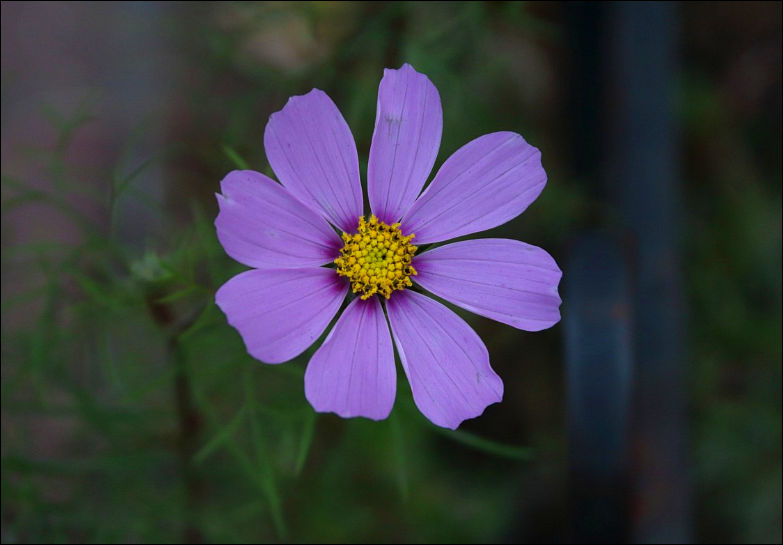

Video sample :
http://www.3dnews.ru/assets/external/illustrations/2013/10/24/772111/MVI_9246.MOV

 canon_1.jpg783 x 545 - 50K
canon_1.jpg783 x 545 - 50K
 canon_2.jpg800 x 529 - 81K
canon_2.jpg800 x 529 - 81K -
While the SL1 looks a lot like other EOS Rebel cameras at first glance, once you hold this model you'll notice the thing that sets the SL1 apart from its Rebel brethren -- its small size. Rebel SL1 is the smallest and lightest DSLR camera in the marketplace.
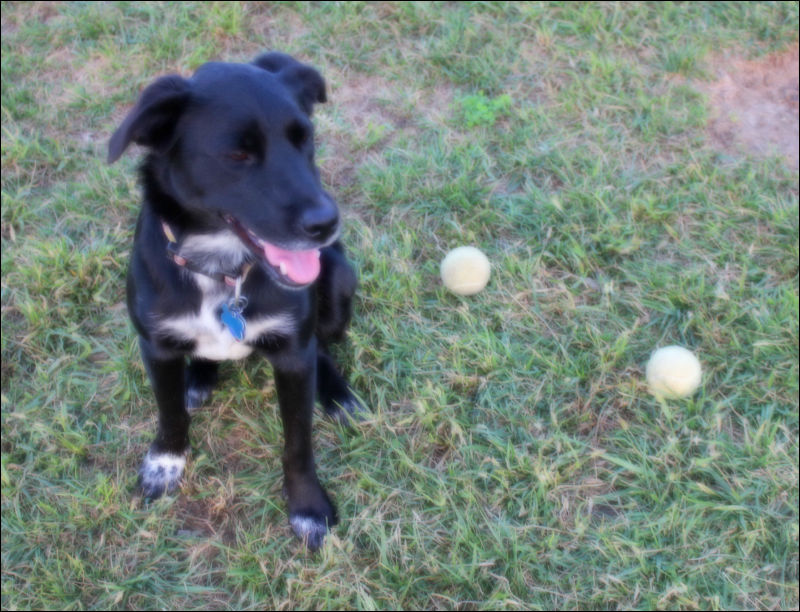
The Rebel SL1 starts quickly and has minimal shot-to-shot delays and shutter lag when using the camera in Viewfinder mode. There are some delays when shooting in Live View mode, which is normal for a DSLR, but Canon has added a Hybrid AF II system to this camera and greatly improved the SL1's ability to autofocus in Live View mode.
And Canon gave the high-resolution LCD a touchscreen capability with this Rebel camera, which is a great feature to help beginners learn to use the camera. The touchscreen is very responsive, allowing for natural sweeping and pinching movements like you'd use on a smartphone or tablet.
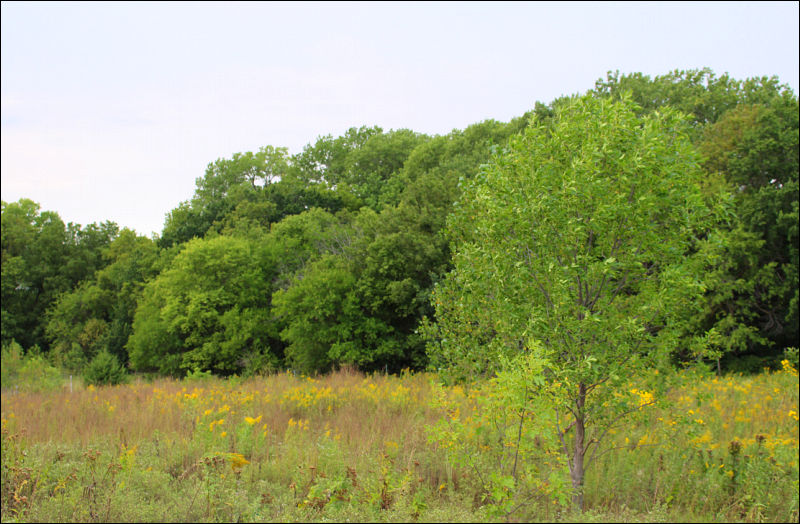
ISO settings up to 12800 are available, and the Rebel SL1 creates really good photographic quality in low light situations. Noise is minimal at all but the highest couple of ISO settings.

 rx7.jpg800 x 612 - 133K
rx7.jpg800 x 612 - 133K
 rx6.jpg800 x 524 - 123K
rx6.jpg800 x 524 - 123K -
Canon 5D Mark III vs. SL1
As far as I'm concerned, I see no significant difference between the two (check images on link below). Remember, these are extreme blow-ups from prints many feet wide. If I showed the complete, uncroppped images (which I don't here) or showed them at a more reasonable size more like the sizes at which people actually print, they would be completely identical.
Therefore as I always say, the more expensive camera only costs more and weighs you down more. Sure, I can force differences under unreasonable circumstances for the sake of spicing up my reviews, but for actual shooting, it doesn't matter what camera you use.
http://kenrockwell.com/canon/comparisons/sl1-vs-5d-mk-iii/index.htm
-
Continuous AF during video shooting was on par with most ILCs, though our brief hands-on time with a preproduction EOS 70D, which includes Canon’s new Dual Pixel CMOS AF, made us think that this soon-to-be-released DSLR will become the new gold standard for AF while shooting video, at least for amateur shooters. As far as video quality goes, the footage we shot was quite nice. Persnickety videographers might notice some compression artifacts, but for the average family, the SL1 will produce very pleasing footage. There’s even a stereo microphone input in case the built-in mono mic isn’t enough for you.
SL1 makes a very compelling option right now. And, the images we got from the APS-C-sized sensor look great. For most family shooters and anyone looking for an easy-to-carry vacation camera, Canon’s EOS Rebel SL1 is an excellent option.
http://www.popphoto.com/gear/2013/08/camera-test-canon-eos-rebel-sl1-dslr?page=0,0
-
The Canon Rebel SL1 continues the well-established reputation for high image quality we've seen from previous Rebels. Exposures are generally good, and white balance is most often correct. Images have good contrast and saturation and detail is also up to par. In-camera JPEGs are enhanced by the Auto Lighting Optimizer, which is set to Standard by default. It assisted with shadow exposure often enough we usually left it on. More advanced shooters will still benefit from shooting Raw and processing their images more carefully afterward, as more shadow and highlight detail can be extracted from the Raw files
Video quality is significantly improved thanks to the Hybrid AF II autofocus system, which adds the missing element that made so many of the SL1's predecessors too difficult to use for video. Combined with the new 18-55mm STM lens, having a usable, quiet autofocus system makes video capture suitable for consumer users. Face tracking worked very well, as did touch autofocus, and the STM lens did its work quickly and quietly.
Its smaller size and lighter weight make it easier to pack and carry, meaning the Canon SL1 is more likely to be used, and its fuller feature set helps it stand out for those dissatisfied with their smartphone shots.
-
In many ways, the Canon SL1 provides the best of both worlds, pairing the compact, lightweight body of a mirrorless camera and the performance and image quality of a DSLR. You could almost call it a miniaturized version of Canon's Rebel T4i/T5i DSLRs. And that's a good thing; both standard-size interchangeable lens cameras are solid, full-featured consumer models. It's somewhat amazing that Canon can pack so much DSLR into a tiny body.
The image quality of the Canon SL1 is almost identical to that of the T4i/T5i; if you look at the comparison crops against the T5i (the replacement for the T4i that was introduced at the same time as the SL1), it's outright uncanny. Photos taken with the SL1 at low ISOs in particular are excellent, but there is noticeable drop-off as ISO rises above 1600 -- the Canon Rebels could still stand some IQ and processing improvements to make high-ISO results more competitive. The SL1 also doesn't exhibit the dynamic range we've seen recently from other consumer DSLRs in its class
http://www.imaging-resource.com/PRODS/canon-sl1/canon-sl1A.HTM
-
Canon’s Rebel SL1 has an awesome sensor with excellent image quality. We found the high ISO images to not be as noisy as Nikon’s. The Canon also delivers spectacular color and we also found that the images that it puts out are more than adequate for professional work.
http://www.thephoblographer.com/2013/07/22/which-one-nikon-d3200-or-canon-rebel-sl1/
-
Canon has done something with the Rebel SL1 that we believe they’ve gotten pretty much right in most aspects. The image quality that this camera can provide is excellent overall. Not only is the SL1 responsive and simple to use, but it is also quite small and will make you want to carry it everywhere.The novice and amateur users that this camera is targeted towards will be ecstatic with their purchase, but we need to clearly state the only the advanced users will be able to take the absolute fullest potential of the camera’s strengths
http://www.thephoblographer.com/2013/07/12/review-canon-rebel-sl1/
-
EOS 100D / Rebel SL1 is a surprising camera in many ways, not least that it delivers the typical EOS experience without too many compromises at all. It makes a compelling alternative to a compact system camera when paired with the smaller Canon lenses.
http://www.photographyblog.com/reviews/canon_eos_100d_review/
-
The Canon EOS 100D is the smallest DSLR available with an optical viewfinder, and appears to be Canons answer to DSLR-style mirrorless cameras, being roughly the same size as the Micro Four Thirds Panasonic Lumix G6, as well as roughly the same price, although the G6 features a swivelling touch screen, quicker continuous shooting, and more advanced features built in (including Wi-Fi). In addition, Micro Four Thirds lenses are generally smaller than Canon EOS lenses. And herein lies the dilema with the Canon EOS 100D, while the camera body is much smaller, the lenses remain large and the new 18-55mm IS STM is in fact larger than the lens it replaces. Add to this the extremely competitive pricing of the latest mirrorless cameras, you have to wonder who will buy this new camera?
If you want a small camera with DSLR image quality, you can buy a much smaller mirrorless camera, for much less, or if you want a DSLR for more advanced features then the 600D and 700D are available with the extremely useful vari-angle screen. If the 100D was a replacement or update to the 1100D and had an entry level price point to match it, then the reduced number of features of the 100D would make sense, however at the moment the lack of some features, which most competitors now feature (stereo sound, panoramic, longer battery life), make it feel slightly limited at times.
http://www.ephotozine.com/article/canon-eos-100d-digital-slr-review-22047
-
The relatively small size and light weight of the EOS 100D will make it a sought-after DSLR for travellers, bushwalkers and anyone who finds the current cameras have been too big and heavy. Its ability to accept most of Canon's lenses and accessories and merge seamlessly into an existing system make it a good choice as an extra body to complement a 'full frame' camera system.
Like the EOS 700D, the 100D has a well-designed user interface with a wide range of user-adjustable controls plus a well-thought-out suite of automated functions to help less experienced photographers achieve the high picture quality this little camera is capable of.
http://www.photoreview.com.au/reviews/dslr-cameras/entry-level/canon-eos-100d
Howdy, Stranger!
It looks like you're new here. If you want to get involved, click one of these buttons!
Categories
- Topics List23,992
- Blog5,725
- General and News1,354
- Hacks and Patches1,153
- ↳ Top Settings33
- ↳ Beginners256
- ↳ Archives402
- ↳ Hacks News and Development56
- Cameras2,367
- ↳ Panasonic995
- ↳ Canon118
- ↳ Sony156
- ↳ Nikon96
- ↳ Pentax and Samsung70
- ↳ Olympus and Fujifilm101
- ↳ Compacts and Camcorders300
- ↳ Smartphones for video97
- ↳ Pro Video Cameras191
- ↳ BlackMagic and other raw cameras116
- Skill1,960
- ↳ Business and distribution66
- ↳ Preparation, scripts and legal38
- ↳ Art149
- ↳ Import, Convert, Exporting291
- ↳ Editors191
- ↳ Effects and stunts115
- ↳ Color grading197
- ↳ Sound and Music280
- ↳ Lighting96
- ↳ Software and storage tips266
- Gear5,420
- ↳ Filters, Adapters, Matte boxes344
- ↳ Lenses1,582
- ↳ Follow focus and gears93
- ↳ Sound499
- ↳ Lighting gear314
- ↳ Camera movement230
- ↳ Gimbals and copters302
- ↳ Rigs and related stuff273
- ↳ Power solutions83
- ↳ Monitors and viewfinders340
- ↳ Tripods and fluid heads139
- ↳ Storage286
- ↳ Computers and studio gear560
- ↳ VR and 3D248
- Showcase1,859
- Marketplace2,834
- Offtopic1,320



